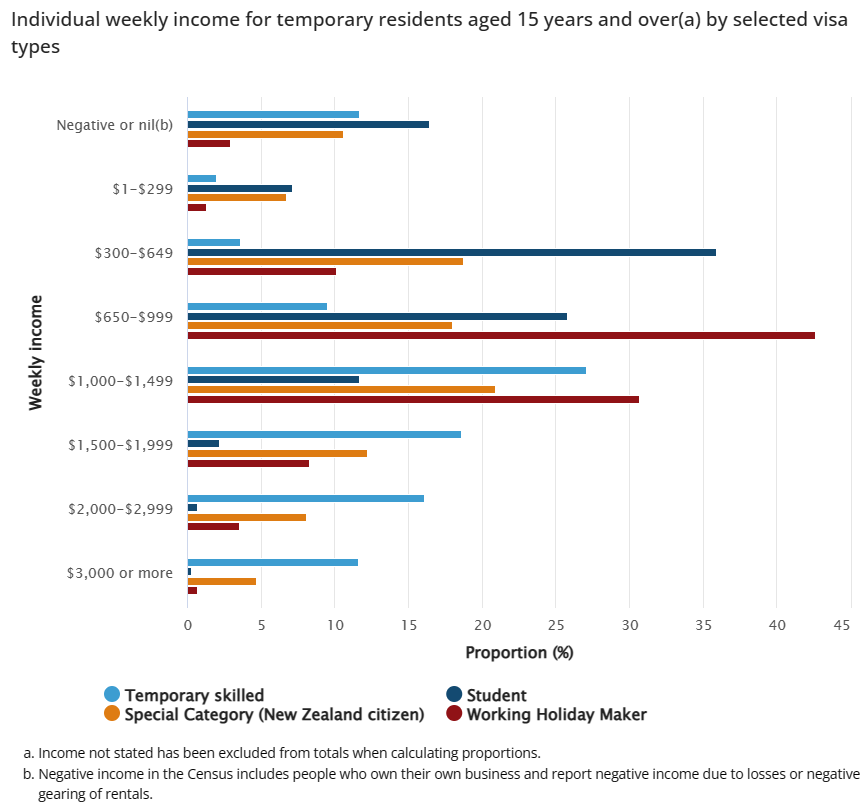In December 2022, the Australian Bureau of Statistics (ABS) released data showing that migrants earned 13% less than the median Australian income 2019-20.
“The median annual personal income for migrants was $45,351 in 2019-20, compared with $52,338 for the population as a whole”, the ABS said.
Migrants also held 26.3% of all jobs in Australia in 2019-20 (5.3 million jobs, worked by 3.6 million migrants), which was below their 29.8% share of Australia’s population.
On Friday, the ABS released data on temporary visa holders in Australia, which showed that the median individual weekly income of temporary residents aged 15 years and over was just $790 ($41,080 per year) in 2021:
The highest paid cohort were temporary skilled workers, who earned $1,416 per week ($73,632) in 2021.
The median full-time Australian wage was around $85,000 in 2021, which itself is pulled down by unskilled workers.
Therefore, so-called skilled migrants were paid well below the population median full-time wage.
The Albanese Government has announced that it will increase the Temporary Skilled Migrant Income Threshold (TSMIT) to $70,000 ($1346 per week) on 1 July, which itself is $15,000 below the median full-time wage.
The next chart from the ABS plots the pay ranges of temporary skilled workers (light blue bars) and suggests that more than one-third of the temporary ‘skilled’ migrant workers in Australia wouldn’t meet this new $70,000 minimum pay threshold:

Let’s be honest for a moment. If the TSMIT is not set at least at the median full-time income (which includes unskilled workers), Australia’s “skilled” visa system cannot be considered to be truly skilled.
Labor’s $70,000 TSMIT is far too low and will guarantee that Australia’s economy will continue to be dominated by low-wage, low-skilled, and low-productivity migrants.
Lifting the TSMIT to the median full-time income, and indexing it to wage growth, would ensure that local workers are no longer undercut. Taxes earned from migrants would also be significantly higher.
Additionally, raising the income threshold (quality bar) would make it more difficult for other temporary migrants, like international students, to convert to a permanent skilled visa.
The end result would be lower overall immigration into Australia, which is what voters want.
Population pressures would consequently decrease, resulting in lower infrastructure expenses and less strains on the housing market.
The Albanese Government has erred badly in siding with Big Business, Big Property and the education-migration lobby in maintaining a high volume, low-quality immigration system.

